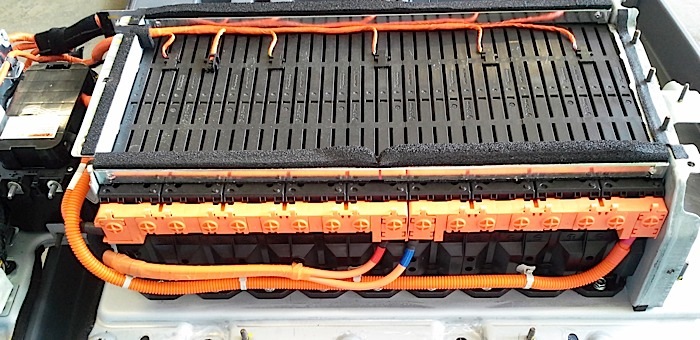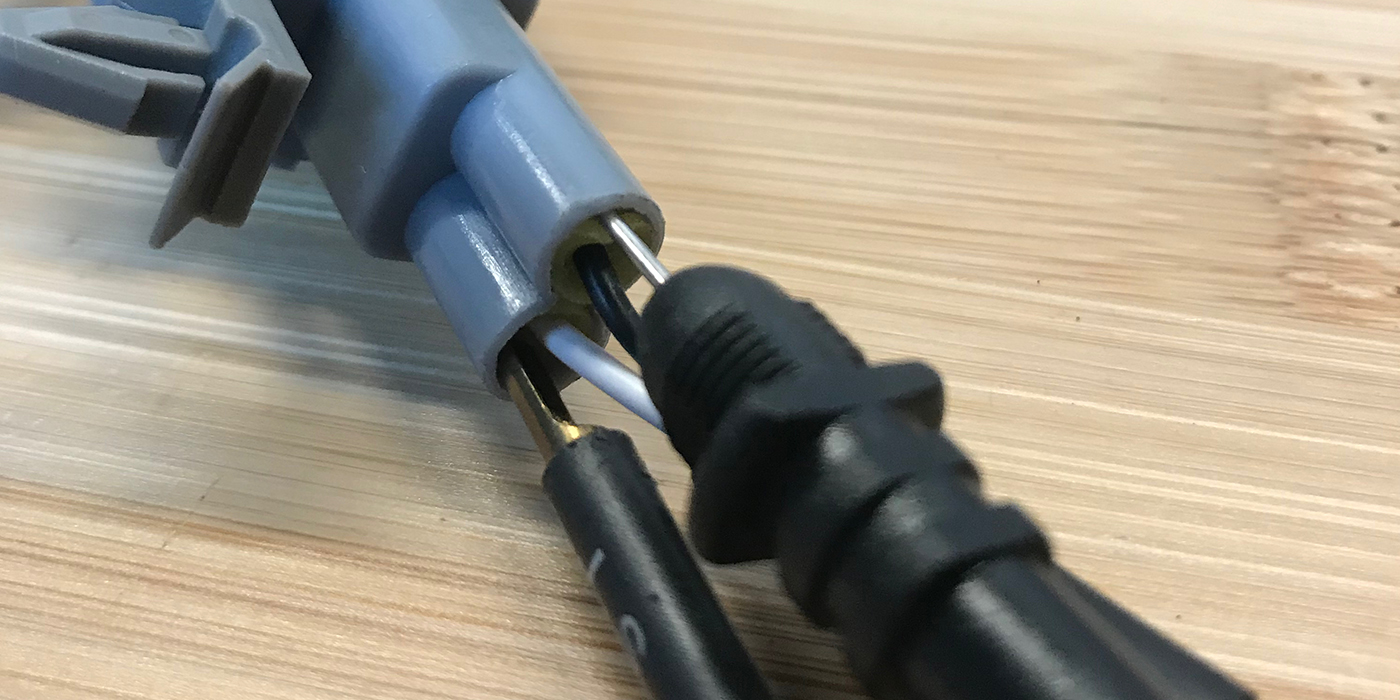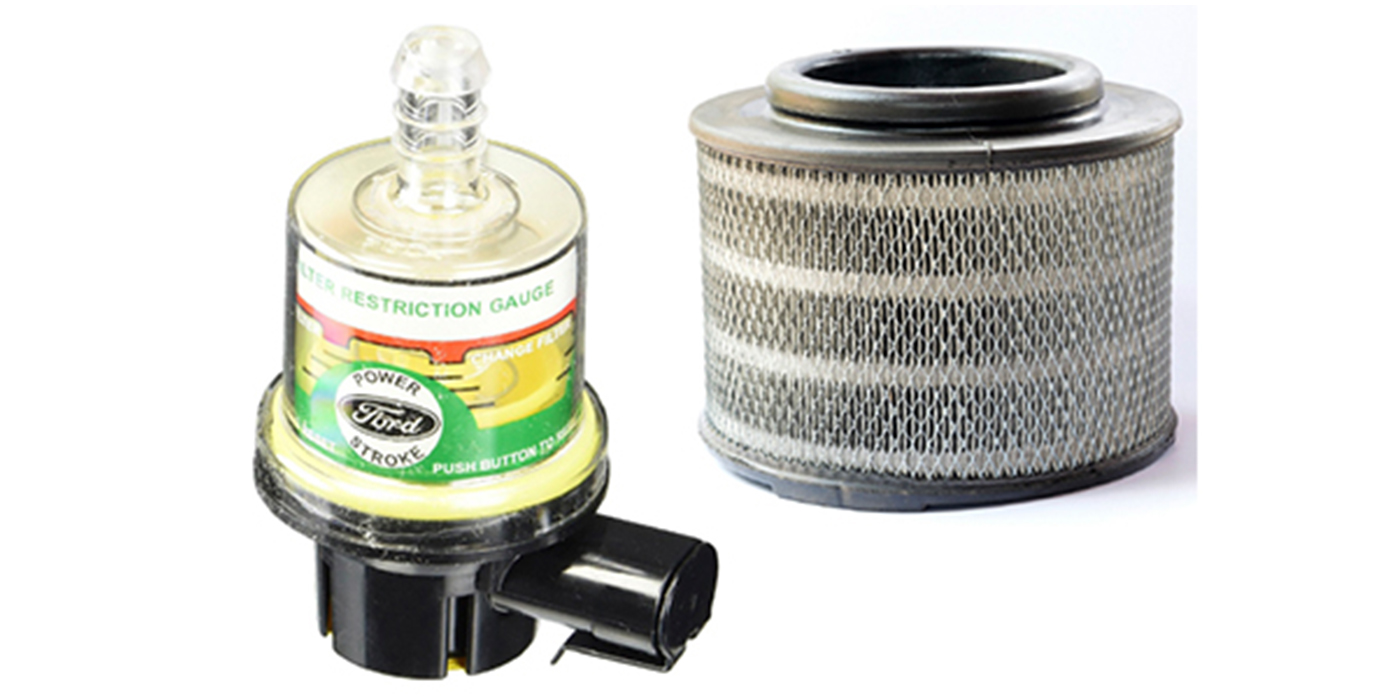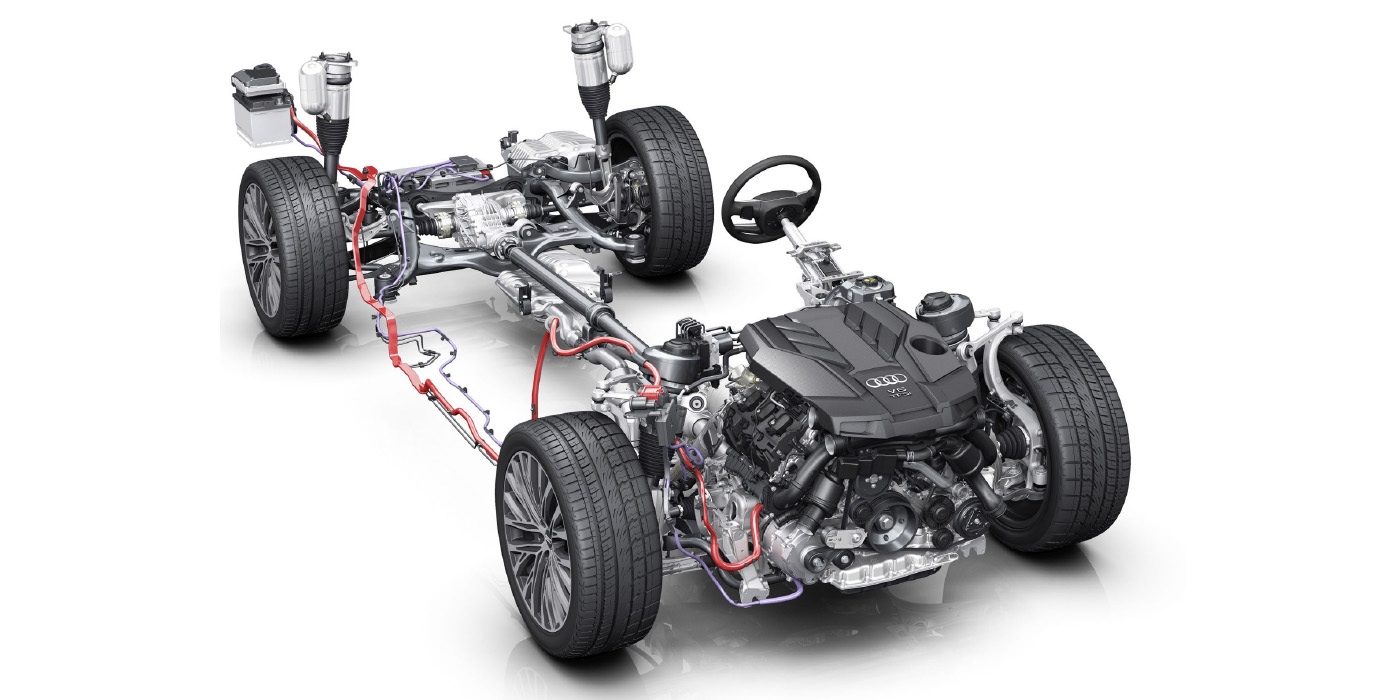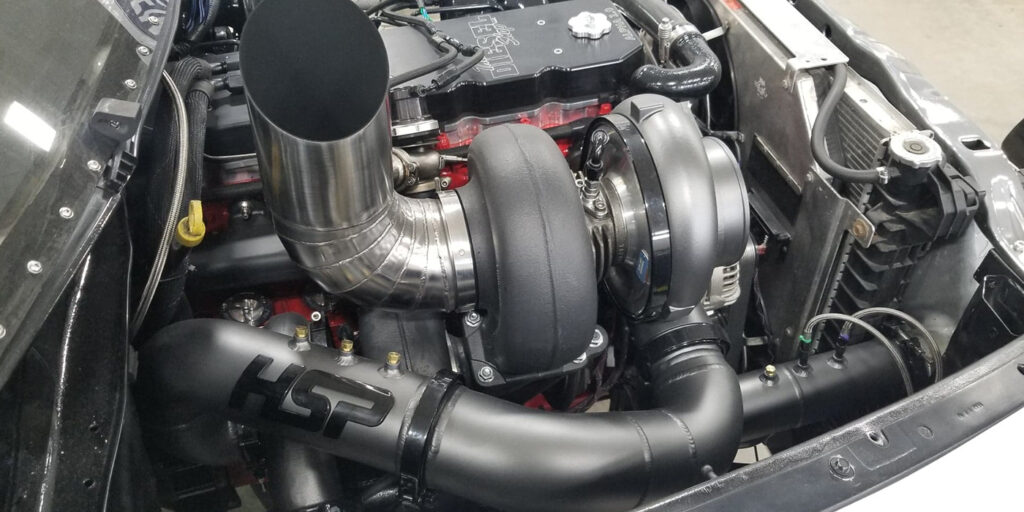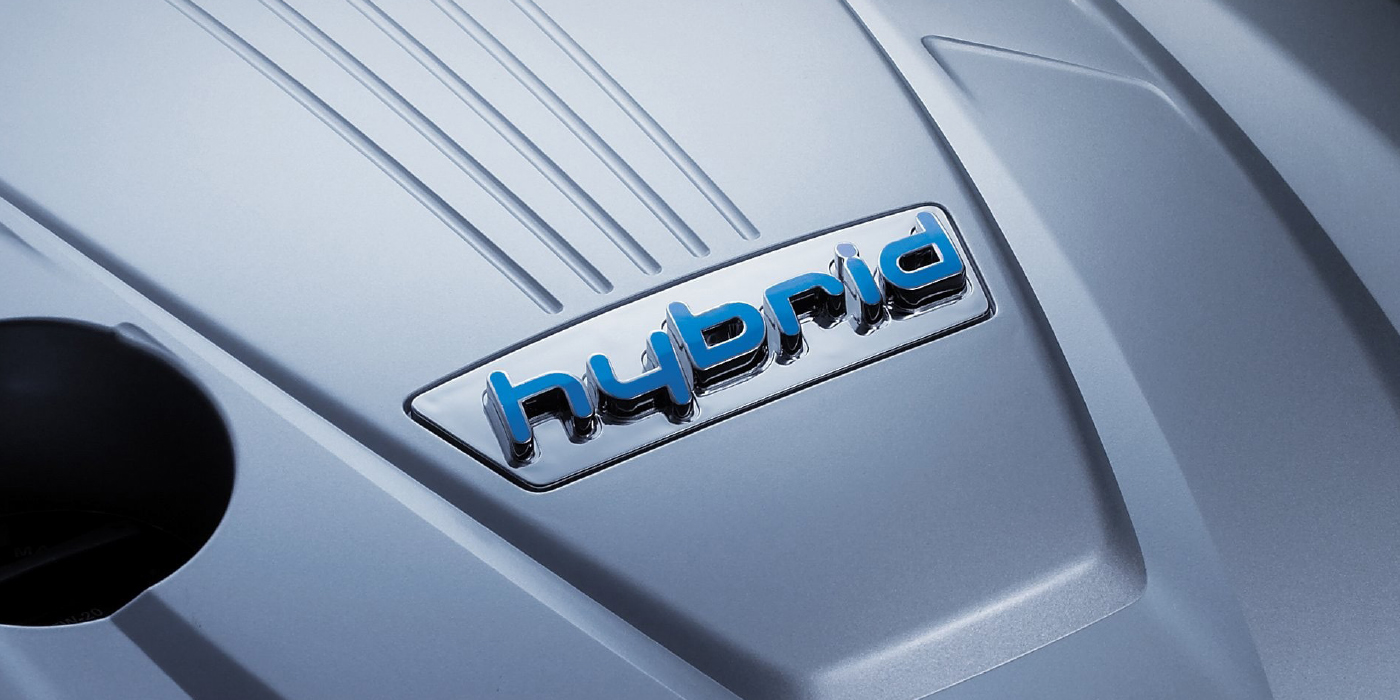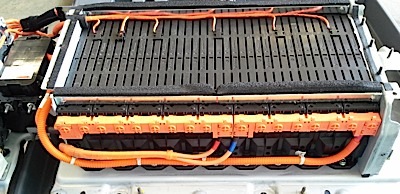 What is an EMV?
What is an EMV?
As you read the hybrid and plug-in articles that my company, ACDC, is writing this year, we have coined a new term: EMV (electric motor vehicle). Rather than use hybrid, plug-in hybrid, battery electric or electric car with a range extender, we will refer to all these as an EMV. When necessary, we will specify one of the other terms as needed.
Last month we covered nickel metal hydride batteries. This month we will explore lithium cells.
Electric Car High Voltage Batteries
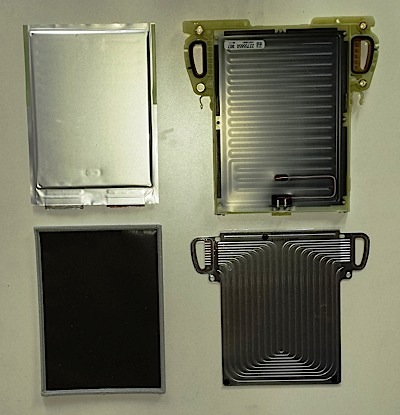
Every car with a “plug to grid” system is using lithium batteries. Most hybrids (with Toyota being the major exception) have switched to lithium. Here is a list of pure EVs that are sold in most of the U.S.: Nissan Leaf, Tesla S, BMW i3, Mitsubishi i-MiEV. Some green states also sell these pure EVs: Ford Focus EV, Fiat 500E, Mercedes B Class Electric, VW E-Golf, Smart EV, Chevy Spark EV and Kia Soul EV as well as the four already mentioned. Next up are EVs with range extender (has a back-up gas engine): Chevy Volt, Cadillac ELR and BMW i3 REx. After that you have plug-in hybrids made by Ford, Toyota, Porsche, Honda and BMW. A couple causalities include Fisker and Coda. More EMVs are on the way, so the future looks bright.
Basic Battery Construction of EVMs
Discussing electric cars starts with the cell. Two to three cells are connected in parallel to create a module. Some modules, like the Nissan Leaf, have two cells in parallel and two cells in series all packed into a metal container. Many modules are then assembled into “battery packs” and many subsystems support the pack. Cooling, heating, voltage and amperage management, high voltage leak detection and relays are added to ensure a long, safe life. Electric car packs can weigh as much as 600 pounds. Special lift fixtures are needed to safely support and move these bulky parts.
Li-ion Batteries
In 2008, the Tesla Roadster, a pure EV, was sold with a lithium-ion battery pack. Next up was the 2010 Mercedes S400 Hybrid also with Li-ion. Then came Hyundai, BMW, Honda, GM, Nissan, Ford and others that went to a lithium-based cell. Why move away from a known good battery, nickel metal hydride (NiMH)?
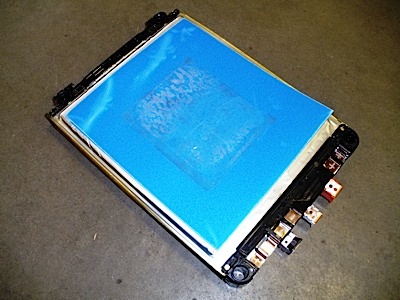
Many different lithium chemistries are used in EMVs. These batteries in theory are better, but in my opinion, not enough time has gone by to know in the real world how they will hold up. We do know that lithium-based packs are lighter and have a higher volt per cell rating: 1.2 volts versus 4.0 volts. To be more accurate, a lithium cell’s voltage can vary from 3.2 volts on a Honda to 4.0 volts on a Kia. Hyundai and Kia use “Lithium Polymer” and make many claims about its superiority as Hyundai backs up its HV battery with a lifetime warranty, parts and labor, to the original owner on the Hyundai Sonata Hybrid. ACDC has studied these designs carefully and one important aspect is the balancing per cell that comes from their sophisticated programing and hardware. Many have questioned the Nissan Leaf (a pure electric vehicle)) battery pack design as it has no built-in cooling system. The Chevy Volt has a highly developed liquid cooling and heating system. So, there is no “one way” to build a lithium battery pack.
Cell Balancing
To reduce the fire risk and achieve greater performance, each cell in a lithium pack is hard wired to the battery ECU so that each cell can be monitored and balanced if needed. When two cells are connected in parallel, they balance each other (referring to the cells that are in series). A resistor is brought into the circuit during charging if that cell has a higher voltage than the rest. For example, we may have cells that are at 3.73 volts, except one cell at 3.97 volts. In that event the current going to the higher voltage cell would be re-directed, via the ECU and a switching transistor, to the resistor, and that cell would stop being charged until the other cells catch up. This can only be done during charging, either during regenerative braking, internal combustion engine charging or when plugged into the grid. In this way, the pack has a longer expected life.
Kilowatts Per Mile
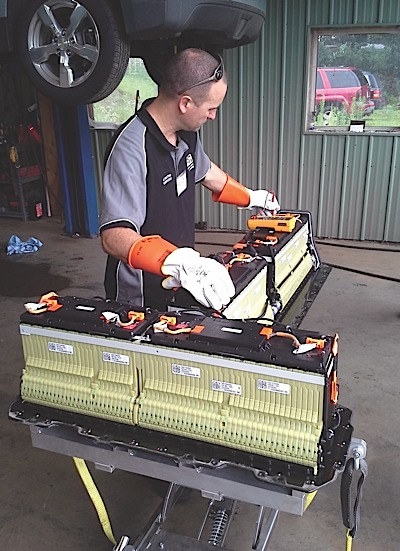 As stated before, some Li-ion packs put two or more cells in a parallel and then connect those groups into a series. This arrangement is used on EVs to add more energy for long distance driving. Understanding miles per gallon is easy, but now you will need to shift your thinking to watts per mile. EVs often report on the dash the Kwh per mile. A rating of 4 miles per Kwh is very good, but cold weather or aggressive driving can move that number to less than 2 miles per Kwh. Battery packs are rated in Kwh and the Volt has a 16 Kwh battery pack. The newer Chevy Volt (2015) is slightly higher. When it is fully charged, it is at about 90% SOC and “empty” at 20% SOC, so the usable Kwh is 11.2. At 4 miles per Kwh, the Volt can travel about 49 miles, but at 2 miles per Kwh it is half that. The EPA rates the Volt at about 35 miles on electricity. As you know the Volt has a gas engine as a back-up when the battery runs low. When battery technology advances, the driving range will improve.
As stated before, some Li-ion packs put two or more cells in a parallel and then connect those groups into a series. This arrangement is used on EVs to add more energy for long distance driving. Understanding miles per gallon is easy, but now you will need to shift your thinking to watts per mile. EVs often report on the dash the Kwh per mile. A rating of 4 miles per Kwh is very good, but cold weather or aggressive driving can move that number to less than 2 miles per Kwh. Battery packs are rated in Kwh and the Volt has a 16 Kwh battery pack. The newer Chevy Volt (2015) is slightly higher. When it is fully charged, it is at about 90% SOC and “empty” at 20% SOC, so the usable Kwh is 11.2. At 4 miles per Kwh, the Volt can travel about 49 miles, but at 2 miles per Kwh it is half that. The EPA rates the Volt at about 35 miles on electricity. As you know the Volt has a gas engine as a back-up when the battery runs low. When battery technology advances, the driving range will improve.
Summary
EMVs are selling well as the price of gas is going up again. EMV battery work can be a profit-making part of your business if you avoid the temptation to sell an iffy battery pack as a good unit. A low mileage pack, no physical damage and under 3 months since the crash, is probably a good bet that you are fine. A 200,000 mile pack is risky at best.
We are changing to a more energy efficient and cleaner technology for powering our beloved cars and trucks. This all comes with a price. In some ways we are starting over again.

